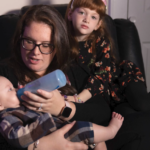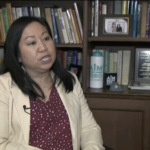The Dignity for All Students Act was signed into law on September 13, 2010 and took effect on July 1, 2012. According to the New York State Education Department, the dignity act “seeks to provide public elementary-school and secondary-school students with a safe and supportive environment free from discrimination, intimidation, taunting, harassment, and bullying on school property, a school bus and/or at a school function.” According to an official from the New York State Center for School Safety, the dignity act “takes a major step in creating more nurturing environments in all our schools.” The impetus for passage of the act was the increasing number of complaints about bullying at school and through social media. Schools are now expected to provide education and human-relations training for students of all ages to prevent discrimination and harassment. Schools must implement codes of conduct and procedures for reporting incidents of discrimination or harassment on school grounds. Last month, the state legislature passed an amendment to the dignity act that will address cyber-bullying. This provision will take effect a year from now and will enable schools to address ways to curb bullying in and out of the classroom. Parents would do well to familiarize themselves with the provisions of the new law. A sample local policy guideline is available on the Internet at: www.p12.nysed.gov/dignityact/documents/LocalDASAModelPolicyRev6-22-12_1.pdf. This 14-page document offers definitions of harassment, bullying, hazing and discrimination and guidelines for prevention, intervention, training, reporting and investigation. The guideline includes an important section that affirms that there is to be no retaliatory action against any reporter acting in good faith. Some schools across the state have registered for www.anonymoustips.com to assist students who might be afraid to report incidents. Although it is important for families to know that there are protections under the law for reporting acts of harassment, it would be naïve to think that children and teenagers who blow the whistle on their peers, if exposed or even suspected, would be immune from social consequences outside of school. The passage of the dignity act provides an opportunity for parents to talk to their children about how to protect themselves from intimidation, harassment and abuse of power. It also offers them a context to discuss how to be sensitive to others who are different and how to stand up, speak out and fight back in the face of abusive behavior. Students need to know that protecting oneself or advocating for others by speaking out are often tests of character and bold moves that can bring social consequences. 2 Although putting legal muscle into the fight against bullying in schools may prove helpful, it is not enough to tackle this social problem. No amount of legislation and no penalties for intimidating schoolyard behavior, no matter how severe, can guarantee that children will be safe at all times in, or outside of, school. The dignity act, as implemented on school grounds and within the purview of school officials, must complemented by support at home, pro-social bonds among neighbors and consistent community standards against bullying, bias and harassment, including in cyber-communities, otherwise the legislation will be little more than a paper tiger, another layer of bureaucracy, with limited influence in the real world in which kids reside.
In The Media
The Dignity Act and the Real World
M
M













